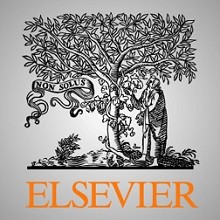
ارتباط میان کارکرد کلیوی و قرار گرفتن در معرض آرسنیک
Abstract
1- Introduction
2- Materials and methods
3- Results
4- Discussion
Acknowledgments
Appendix A. Supplementary data
Research Data
References
Abstract
Background: The understanding for the impact of petrochemical pollutants exposure on renal functions is limited. Objectives: Our study examined the associations between renal functions and pollutants exposure in adult residents living in the vicinity of a petrochemical industry. Methods: We recruited 2069 adult residents near a big petrochemical complex in Taiwan in 2009e2012, and they were categorized into high exposure (HE) and low exposure (LE) groups based on their address to source by 10 km radius. Study subjects were measured the urinary levels of arsenic, cadmium, mercury, thallium, and 1-hydroxypyrene (1-OHP). The estimated glomerular filtration rate (eGFR) was calculated using the Taiwanese Chronic Kidney Disease Epidemiology Collaboration equation, and the chronic kidney disease (CKD) prevalence and risks were defined according to KDIGO 2012 guidelines. Adjusted generalized linear and logistic regression models were applied to evaluate the associations between petrochemical exposure and renal functions. Results: Subjects in the HE areas had significantly lower eGFR, higher CKD prevalence, and higher levels of urinary arsenic, cadmium, mercury, thallium and 1-OHP. The closer to complex and high exposure group of study subjects were significantly associated with the decrease in eGFR, higher ORs for CKD and high-intermediate risk of CKD. In addition, the study subjects who had two-fold urinary arsenic and 1- OHP levels were significantly with decreased 0.68 and 0.49 ml/min/1.73 m2 of eGFR, respectively. Conclusions: Residing closer and higher arsenic and polycyclic aromatic hydrocarbon exposure were associated with the renal impairment and risks of CKD among the residential population near the petrochemical industry.
Introduction
Since the late 20th century, morbidity and mortality rates for Chronic Kidney Disease (CKD) has skyrocketed (GBD 2013 Mortality and Causes of Death Collaborators, 2015). The global disease burden for CKD now accounts for a prevalence of approximately 11e13% of the adult population worldwide (Hill et al., 2016). Detection of CKD in its early stages prevents progression into End-Stage Renal Disease, which requires a validated index for assessing kidney function. The Kidney Disease: Improving Global Outcomes (KDIGO) 2012 guideline suggests that reduced glomerular filtration rate (GFR) is an accurate indicator of kidney damage (KDIGO, 2013), which is also a predictor of elevated all-cause mortality risk (Matsushita et al., 2010). Common estimating GFR (eGFR) equations are derived from plasma creatinine levels and have been adjusted for populations across the world to further account for demographic differences (Chen et al., 2014; Levey et al., 2009).
